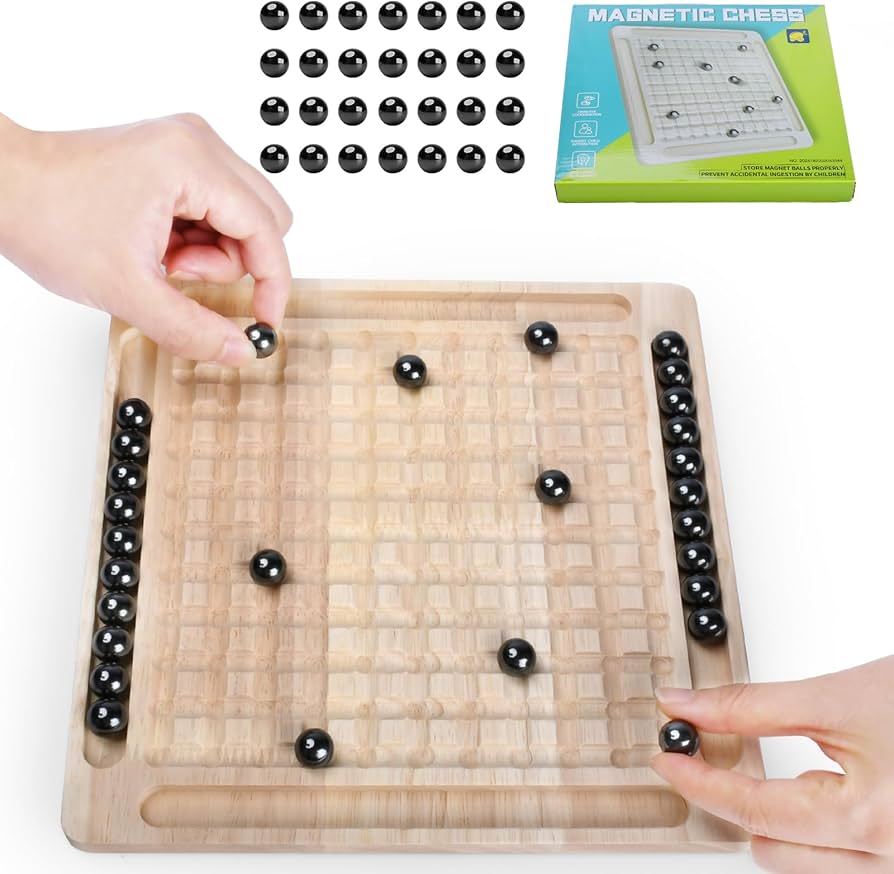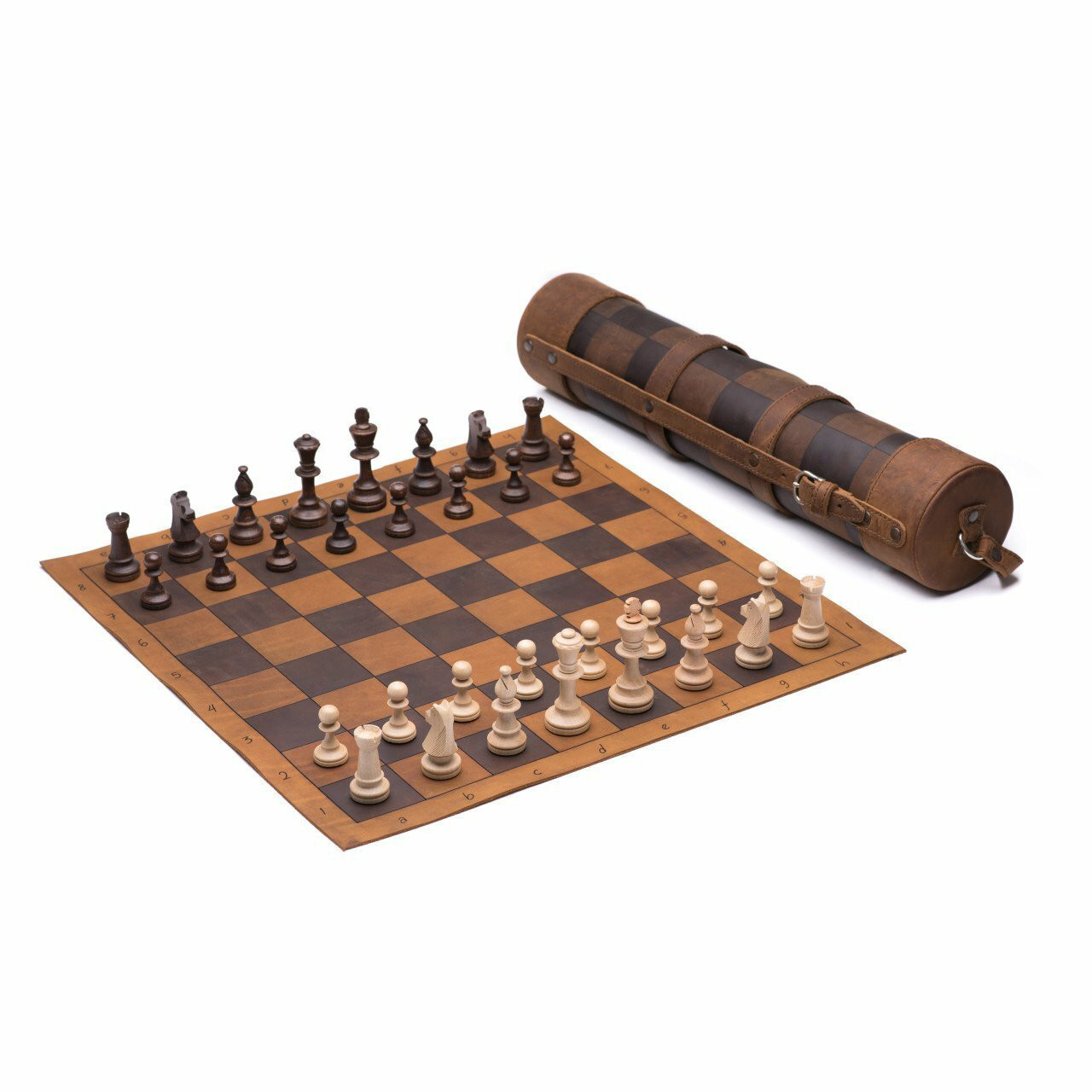Chess players often seek ways to improve their skills. Analyzing games is a key method.
Both Chess. com and Lichess offer tools for this purpose. Understanding your past games can lead to better strategies. Both platforms provide detailed analysis features. These tools help players see mistakes, learn new tactics, and understand game dynamics. Whether you’re a beginner or an experienced player, analyzing your games can be highly beneficial.
This article explores how to effectively use the analysis tools on Chess. com and Lichess. You’ll gain insights into your gameplay, identify patterns, and improve your overall performance. Let’s dive in and discover the best ways to analyze your chess games on these popular platforms.
Introduction To Chess Analysis
Chess analysis is a critical part of improving your game. It helps players identify mistakes and understand strategies better. Both Chess.com and Lichess offer robust tools for this purpose. These platforms provide detailed insights and feedback. Let’s delve into the importance of post-game review and how to choose the right platform.
Importance Of Post-game Review
Reviewing your games helps you learn from mistakes. You can see where you went wrong and what you did right. Analyzing games helps you understand your opponent’s tactics. This knowledge can be applied to future games. Post-game reviews also highlight common patterns in your play. Recognizing these patterns can help you improve.
Choosing The Right Platform
Chess.com and Lichess are two popular platforms for chess analysis. Chess.com offers a user-friendly interface with many features. It provides detailed game reports and move-by-move analysis. Lichess is a free and open-source platform. It also offers strong analysis tools and is loved by many players. Both platforms have their strengths. Choose the one that suits your needs and preferences.
Setting Up Your Chess.com Account
Setting up a Chess.com account is your first step to improving your chess skills. Chess.com offers many tools. These tools help you analyze and improve your game. Follow these steps to set up your account.
Creating An Account
First, visit the Chess.com website. Click on the “Sign Up” button. You will find it at the top right corner. Fill in your details. You need an email address, username, and password. Make sure your username is unique. It represents you on the platform. After filling in the details, click “Create Account”. You will receive a confirmation email. Open your email and click the link to verify your account. Now, you are ready to start exploring.
Navigating The Dashboard
After logging in, you will see the dashboard. The dashboard is your control center. Here, you can access all features of Chess.com. The menu on the left side has many options. You can play games, solve puzzles, and join tournaments. You can also analyze your past games. Click on “Home” to return to the main dashboard anytime. Explore each menu option to get familiar with the features. This will help you find what you need quickly.
Remember, practice makes perfect. The more you use these features, the better you will become at chess.
Using Analysis Tools On Chess.com
Analyzing your chess games is essential for improvement. Chess.com offers comprehensive analysis tools to help you understand your games better. Let’s explore the features that make Chess.com a go-to platform for game analysis.
Game Review Features
Chess.com’s Game Review feature is powerful. It provides an in-depth analysis of your games. The tool highlights key moments, shows the best moves, and provides alternative lines. This helps you see where you can improve.
The Game Review is user-friendly. It uses colors and symbols to indicate good and bad moves. Green for good, red for mistakes. It’s easy to follow, even for beginners. You can also see your accuracy score. The higher the score, the better your play.
Identifying Mistakes And Blunders
Understanding your mistakes is crucial. Chess.com’s analysis tool helps you identify mistakes and blunders. Mistakes are suboptimal moves. Blunders are worse; they can lose the game.
The tool provides detailed explanations. You can see why a move is a mistake or blunder. It also suggests better moves. This helps you learn and avoid repeating the same errors.
You can filter the analysis to focus on specific types of mistakes. This makes your study sessions more efficient. You can concentrate on your weak spots and improve faster.
| Feature | Description |
|---|---|
| Key Moments | Highlights important parts of the game |
| Best Moves | Shows the optimal moves at each turn |
| Alternative Lines | Provides different move sequences |
| Accuracy Score | Rates your overall game performance |

Credit: www.reddit.com
Maximizing Lichess Features
Chess players know that practice is crucial. But analyzing games is just as important. Lichess offers many features to help with this. Let’s explore some of the best ways to use these tools.
Creating A Lichess Account
First, you need an account on Lichess. The process is simple and free.
- Go to Lichess.org.
- Click on “Sign Up” at the top right corner.
- Enter your desired username and password.
- Provide your email address for account verification.
- Click “Create Account” and confirm your email.
Now, you have access to all Lichess features.
Exploring The Analysis Board
The Analysis Board is a powerful tool. It helps you understand your games better.
- Move Review: Go through each move. See what you did right or wrong.
- Engine Analysis: Use the built-in engine for deeper insights.
- Training: Set up positions and practice different scenarios.
To use the Analysis Board:
- Click on “Analysis Board” from the main menu.
- Upload a PGN file or paste the game moves.
- Click “Start Analysis”.
- Review the suggestions and make notes.
Using the Analysis Board regularly will improve your play.
| Feature | Benefit |
|---|---|
| Move Review | Understand each move’s impact. |
| Engine Analysis | Get expert-level insights. |
| Training | Practice specific positions. |
By maximizing these features, your chess skills will grow. Start exploring today and see the difference.
Comparing Analysis Tools
Analyzing your chess games can help you improve your skills. Chess.com and Lichess offer excellent analysis tools. Let’s compare their features and benefits. These insights will help you choose the right tool for your needs.
Chess.com Vs. Lichess
Chess.com provides a user-friendly interface. The site is popular among chess players. It offers detailed analysis with various metrics. You can review your moves and see where you went wrong. The platform suggests better moves and explains tactics. This helps you understand your mistakes.
Lichess is an open-source platform. It is completely free. The analysis is powered by Stockfish, a strong chess engine. Lichess also offers detailed move-by-move evaluations. You can explore different lines and variations. The site has a simple design, making it easy to navigate.
Strengths And Weaknesses
Chess.com has a polished interface. The analysis is deep and thorough. It provides insights into your playing style. You get personalized feedback. This can be very helpful. But, some features require a premium subscription. This might be a drawback for some users.
Lichess excels in accessibility. The platform is free with no hidden costs. The analysis is robust and reliable. It is powered by a top engine. The interface is simple and easy to use. But, it lacks some advanced features found on Chess.com. Users may miss these features.
Advanced Analysis Techniques
Analyzing chess games can help you improve your skills. Chess.com and Lichess offer advanced tools for this. These tools can help you understand your strengths and weaknesses. Here, we will explore some advanced analysis techniques.
Using Engine Evaluations
Engine evaluations are a powerful tool. They analyze each move and provide a score. This score helps you understand the quality of your moves. Engines like Stockfish are very popular on Chess.com and Lichess.
- Accuracy: The engine shows how accurate your moves are.
- Blunders: It highlights major mistakes, called blunders.
- Suggestions: It suggests better moves.
Using engine evaluations, you can see where you went wrong. This helps you learn from your mistakes.
Studying Key Positions
Key positions are critical in chess games. Analyzing these positions can teach you a lot. Chess.com and Lichess allow you to study key positions in detail.
| Position | Importance |
|---|---|
| Opening | Sets the stage for the game |
| Middlegame | Crucial for strategy |
| Endgame | Determines the final outcome |
Here are some steps to study key positions:
- Identify critical moments in your game.
- Use the analysis board to review these moments.
- Check engine suggestions for these positions.
By focusing on key positions, you can better understand your decision-making process. This will improve your overall game strategy.
Improving Your Strategy
Analyze your chess games on Chess. com and Lichess to improve your strategy. This helps identify strengths and weaknesses. Practice regularly for better skills.
Analyzing your chess games on Chess.com and Lichess is crucial. It helps you improve your strategy. These platforms offer tools to review your moves. They also highlight your mistakes and suggest better ones. This blog post will guide you on how to use these features effectively.Learning From Mistakes
Chess.com and Lichess show where you went wrong. They pinpoint specific moves that led to your downfall. Use this information to avoid similar mistakes in the future. Focus on the patterns that caused you trouble. This helps you recognize and correct them. Review each mistake closely. Understand why it was a poor move. Was it a tactical error? Did you overlook your opponent’s threat? Knowing the reason helps you avoid repeating it. Take notes if needed. This reinforces learning and retention.Implementing New Ideas
Both platforms suggest alternative moves. These are usually better than the ones you played. Study these suggestions carefully. They often reveal advanced strategies. Try to understand the logic behind these moves. Implement these new ideas in your practice games. This helps you integrate them into your playstyle. Over time, these strategies become second nature. You will notice improvement in your game. Experiment with different approaches. Not all suggestions will fit your style. Find what works best for you. Adapt and evolve your strategy accordingly. “`
Credit: www.youtube.com
Regular Practice And Review
Regular practice and review are essential for improving your chess skills. Platforms like Chess.com and Lichess offer tools for analyzing your games. By reviewing your games, you can spot mistakes and learn from them. This practice will help you become a better player over time.
Setting A Study Routine
Establishing a study routine is crucial. Dedicate specific times for practice. Consistency is key. Spend at least 30 minutes daily reviewing games. Analyze both wins and losses. Use the analysis tools on Chess.com and Lichess. Look for common mistakes. Take notes on what you learn.
Create a comfortable study environment. Minimize distractions. Use a quiet room. Keep a notebook or digital journal. Write down key points. This will help reinforce learning. Aim to make studying a habit. Regular practice will lead to improvement.
Tracking Your Progress
Tracking your progress helps you see improvements. Both Chess.com and Lichess offer progress tracking features. Use these tools to monitor your rating changes. Look at your win-loss ratio. Identify patterns in your games. This will help you understand your strengths and weaknesses.
Set goals for yourself. Aim to increase your rating by a certain amount. Review your goals regularly. Adjust them as needed. Celebrate small achievements. This will keep you motivated. Remember, progress takes time. Be patient and persistent.

Credit: www.reddit.com
Conclusion
Analyzing your games on Chess. com and Lichess helps improve your skills. Both platforms offer valuable tools. They provide detailed game analysis and insights. Use these tools regularly to track your progress. Learn from mistakes and refine your strategies. Embrace these resources to become a better player.
Consistent practice and analysis lead to growth. Enjoy the journey of learning and improving in chess.







